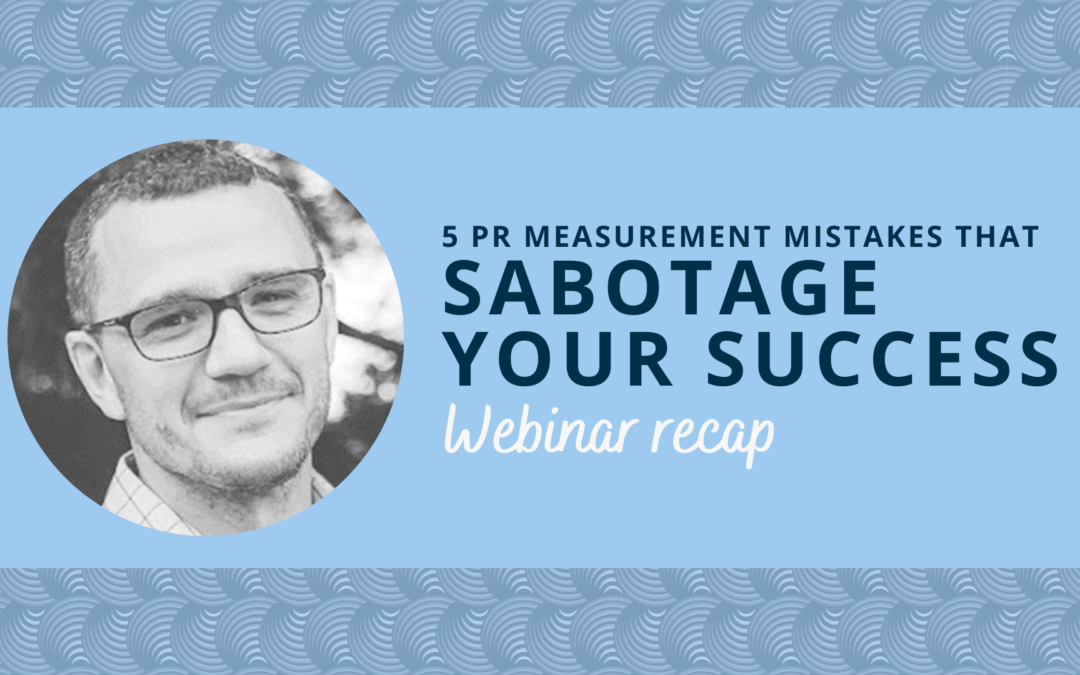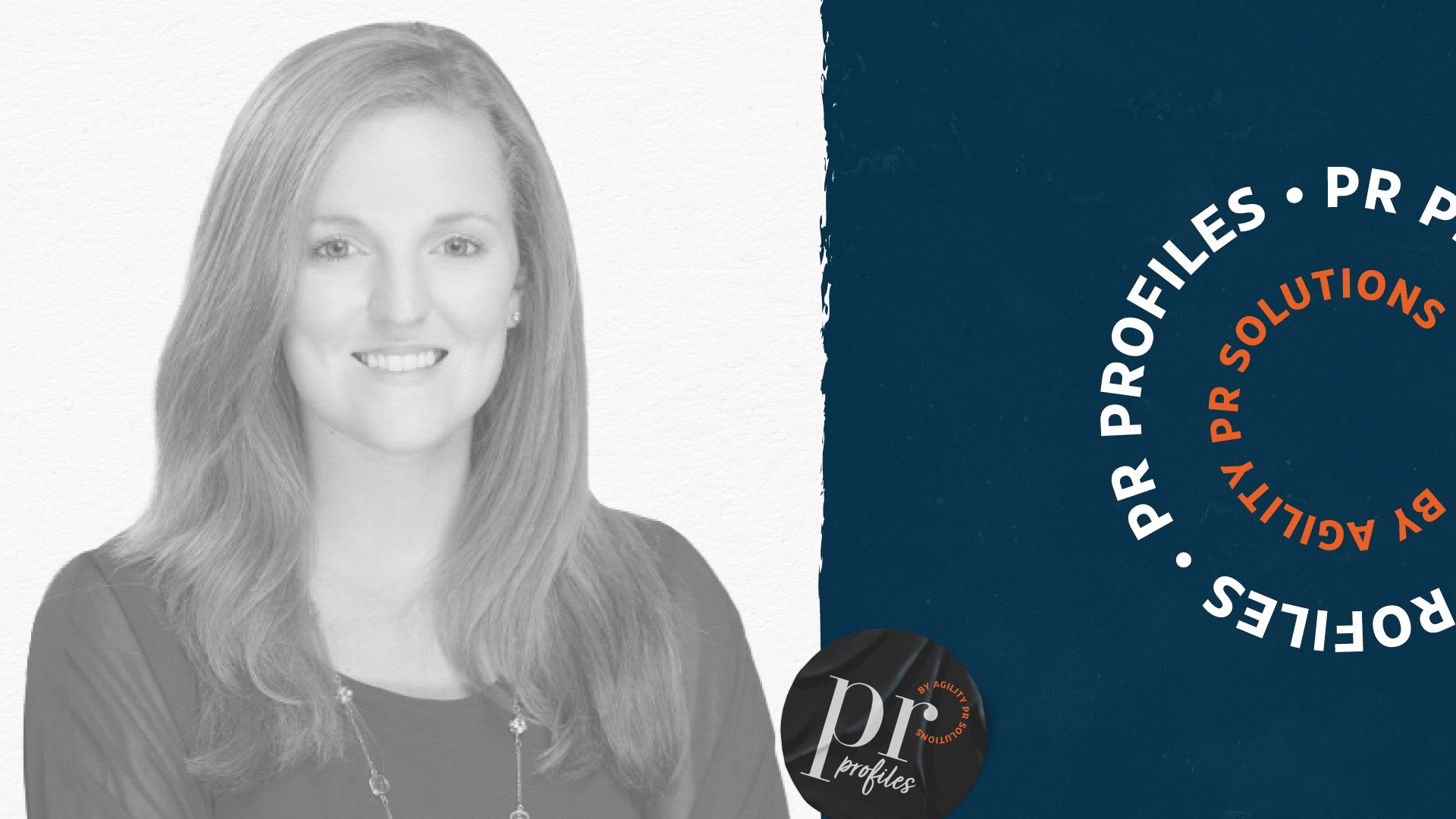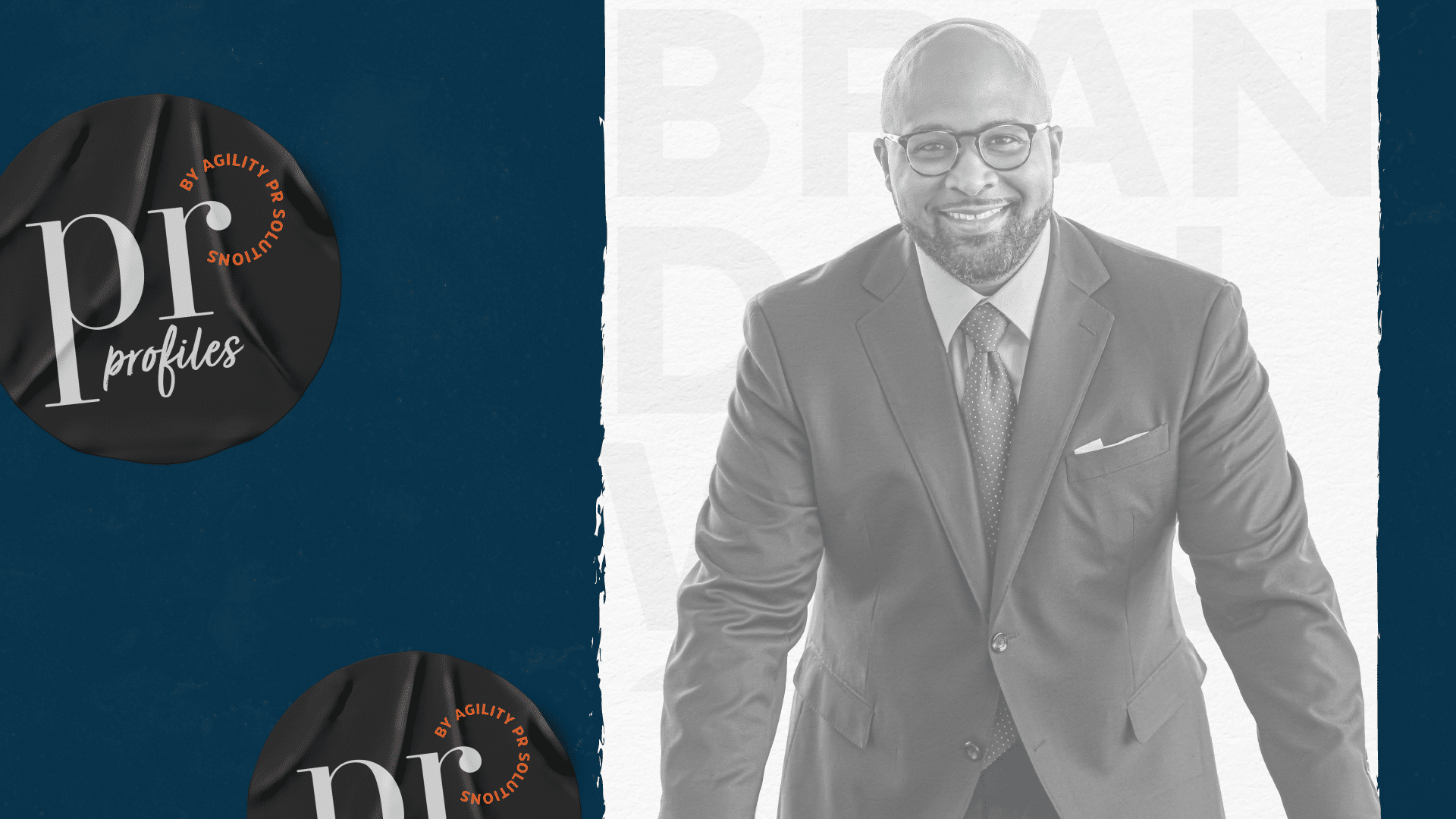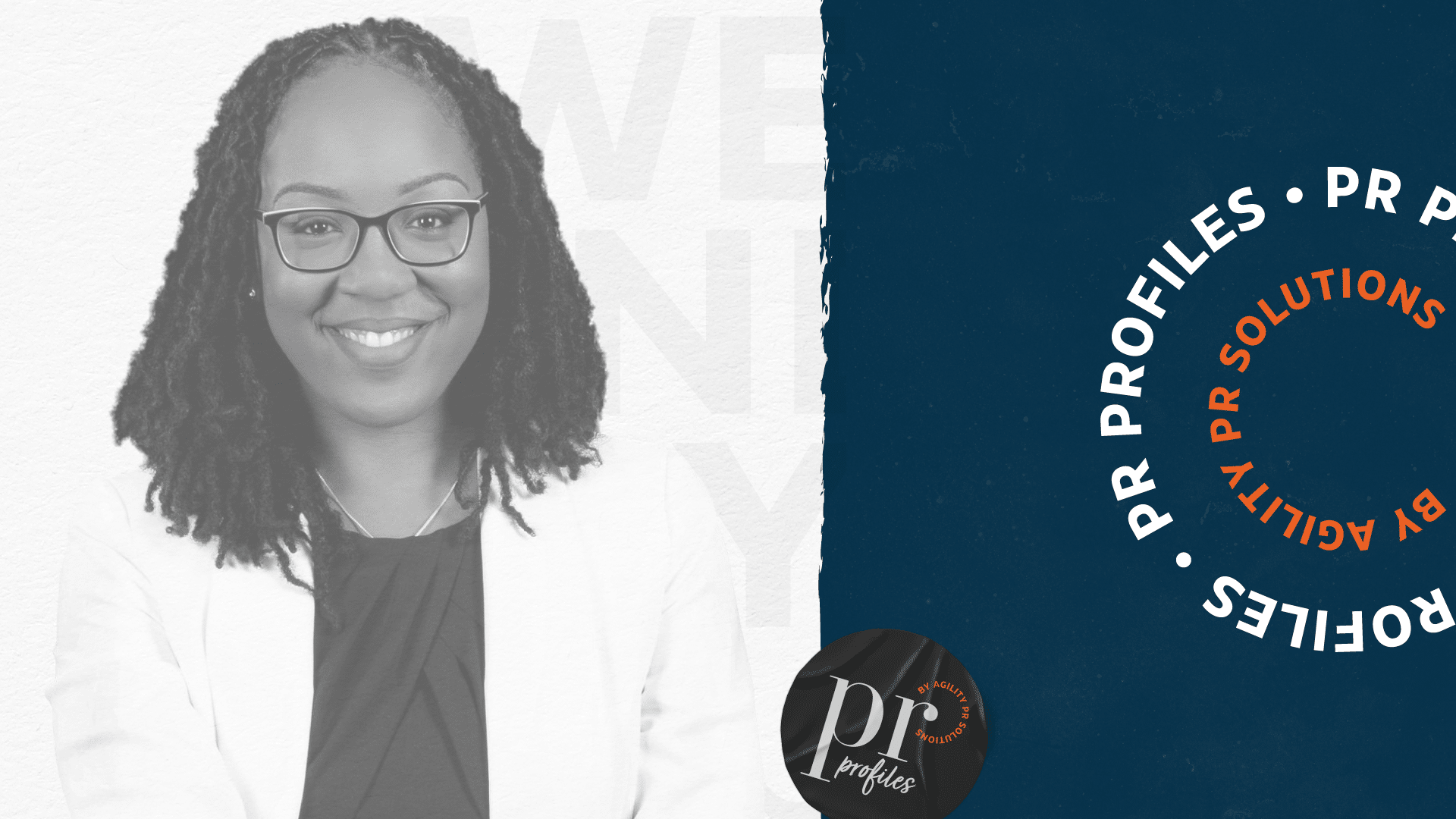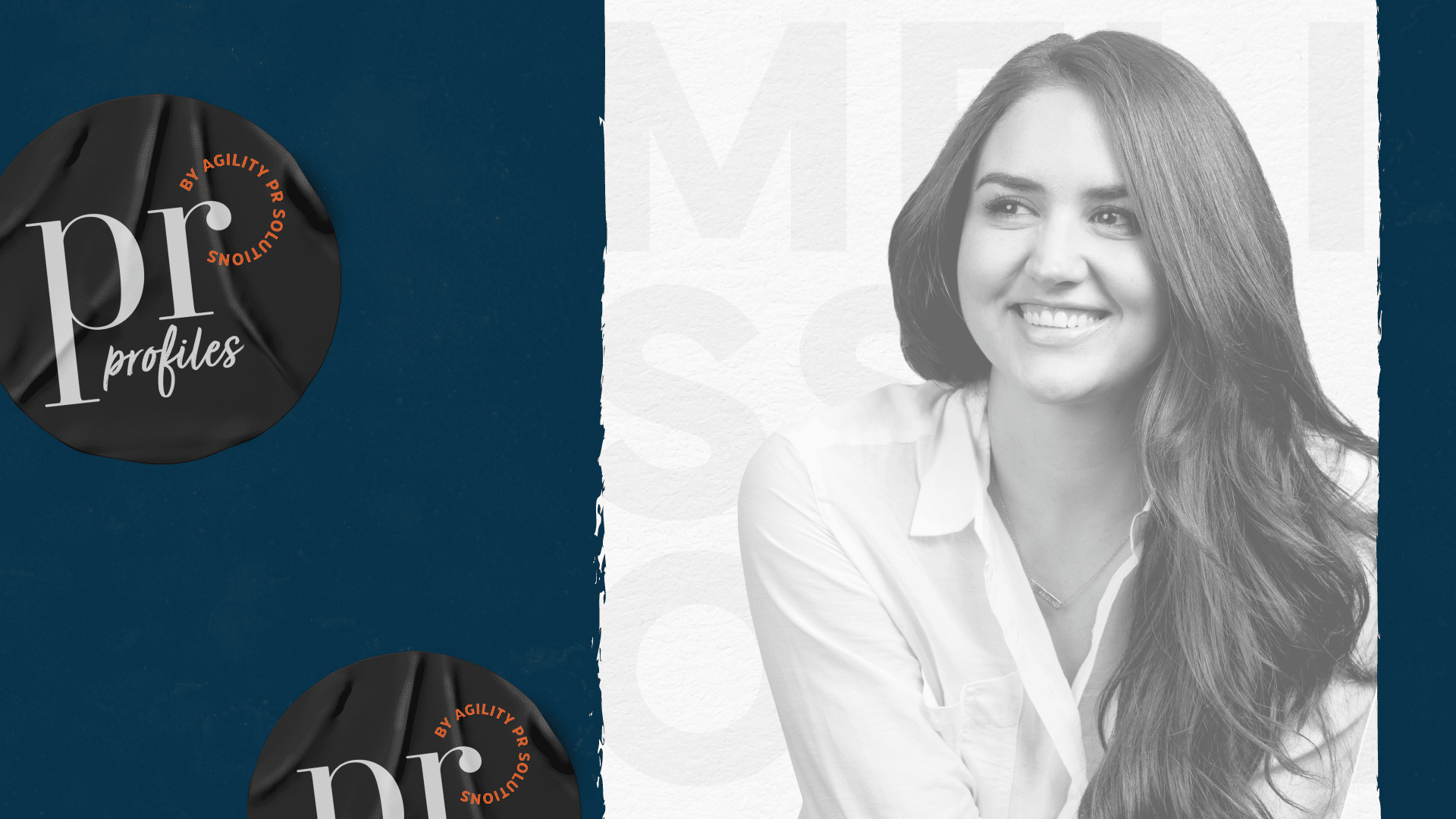Jeremy Parkin, Manager of Data Analytics & Media Intelligence at Agility PR Solutions has some good news when it comes to PR measurement: “You don’t need to be a numbers person to powerfully leverage data in your work.”
You do, however, need to avoid making five PR measurement mistakes, which Jeremy broke down in his July webinar for Agility.
Mistake 1: Jumping right in without calibrating your measurement efforts to business objectives
Humans have an instinct to do what’s easy, and this applies to measurement as well. “People have an innate tendency to seek where the seeking is easy regardless of where the true value may lie,” says Jeremy in his webinar. Unfortunately, Jeremy sees this all the time as people gravitate towards the standard metrics available on monitoring platforms.
“If we don’t stop to get clear about the goals of our measurement efforts, we just end up looking where the looking is easy,” says Jeremy. “Calibrating your measurement efforts to business objectives is how you sidestep the feel-good vanity metrics. It’s how you make sure you’re analyzing and reporting on data that can actually inform business decisions in a meaningful way. And it’s how you create a scoreboard for PR’s impact that’s truly tied to what matters to the business.”
Mistake 2: Starting a measurement habit without making deliberate choices about reporting resolution
In this case, resolution refers to level of detail and two specific things:
- Frequency of reporting: How often do we produce or consume PR measurement reports? What length of cycle are we looking at?
- Altitude of reporting: Should we focus on the tactical or the strategic or both?
Resolution is about getting the right data to the right person at the right time. “Different people in an organization will have very different needs,” says Jeremy. “The kind of altitude and frequency and analysis that makes sense for someone making day to day choices—tactical choices—will not be the same as it is for someone who’s setting objectives for the quarter or making strategic plans for the year.”
Mistake 3: Using narrow metrics to evaluate performance without integrating across dimensions
“I’m talking about picking one metric that doesn’t tell the whole story and trying to make that the measure of success,” says Jeremy. For example, if you choose total mentions to score your media relations performance, getting more mentions this month than last month must be good… right?
Not necessarily. Increased mentions could be due to stories accusing your CEO of embezzling funds from the company, or maybe a passing mention got picked up in a widely syndicated story that was about something else altogether, or the mentions are from a lot of small publications that aren’t read by the audience you’re trying to reach.
“When someone looks to a narrow metric to try to benchmark or explain performance, they end up reducing our crazy, fascinating, complicated world to a single number on a page—pure quantity with no grounding in quality,” says Jeremy.
Mistake 4: Missing the underlying trends and patterns by failing to segment data
“Just looking at something an aggregate can hide important information about major differences within a group or in how a value is distributed across a group,” says Jeremy. “When we fail to segment, one extreme outlier can skew the way an entire group is understood or represented.” Without segmentation, important business decisions are made based on skewed data and the results could be disastrous.
Mistake 5: Presenting data in a way that takes too much effort to understand and interpret
“How you present your data and insights can be where everything comes together or where everything falls apart,” says Jeremy. “Because no matter how good your data and analysis is, if it’s presented poorly, you failed.”
There are two aspects of presentation to keep in mind:
Professional aesthetic: A phenomenon called the aesthetic-usability effect tells us that aesthetic designs are perceived as easier to use than less aesthetic designs.
Convey information clearly: This is all about making reports intuitive and self-evident for the reader because otherwise the reports won’t be given the time they deserve—and require for informed decision making. If the report isn’t intuitive, a high-level executive will take a quick look, realize the effort required to read it in 30 seconds, and put the report aside to look at later. The result: the executive keeps going with their gut-based decision and thus measurement gets denied the attention and resources it deserves.
When designing an aesthetic report that communicates information clearly avoid these three things:
- Choosing the wrong charts
- Sloppy visual hierarchy
- Too much writing and/or writing that merely describes instead of providing insights
The CRISP reporting framework
Making the five mistakes outlined above can undermine your impact and influence. However, if you flip the mistakes and get them right, Jeremy says they can be the foundation for your success. His method of success is called the CRISP reporting framework, an acronym for calibration, resolution, integration, segmentation, and presentation.
“[The CRISP framework] lets you focus your efforts and resources on the areas with the most opportunity for impact,” says Jeremy. The goal of the CRISP framework is “to go into those meetings where everyone is going on and on about their opinions and be that person with the numbers and then use that data to earn trust and credibility and gain influence so that ultimately you can win more resources to make an even bigger splash with the work you do.”
For more about the five mistakes (and how to avoid them), the CRISP framework and to learn some of the strategies the Media Insights Group at Agility use to provide quality, customized and aesthetic reports for clients, watch Jeremy’s webinar for free.

